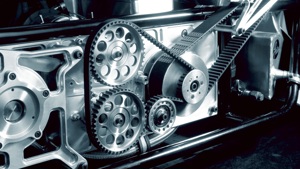Online exclusive: Versatile high-performance elastomers, tires and specialty rubbers
Nestled in the university city of Maastricht in the Netherlands, ARLANXEO combines the scale and resources of Saudi Aramco with the expertise and track record of German specialty chemicals business LANXESS. The result is a synthetic rubber company established in April 2016, with operations across 20 production sites in nine countries, and more than 3,800 employees.
Comprising two main business units—High Performance Elastomers and Tire & Specialty Rubbers—the company produces an average of almost 1,500 mt of rubber a year.
- The high-performance elastomers (HPE) business produces a broad portfolio of technical rubbers for the rubber-processing industry, used for various applications including modifiers for plastic and adhesive raw materials, gas and oil exploration and production and as functional components for the automotive and cable industries (FIG. 1).
- The tire and specialty rubbers (TSR) business develops versatile rubbers, intended mainly for applications in tire production. Among other things, they form the tires’ inner liners (airtight layers), tread and side walls. TSR rubbers are also used for chewing gum, sports and golf balls, hoses and conveyor belts. Most recently, TSR introduced two new commercialized solution styrene-butadiene rubbers (SSBR): a high styrene SSBR1 featuring functional groups designed to interact with silica fillers in order to reduce rolling resistance in passenger tire treads, and a high vinyl SSBR2 also designed to interact with silica fillers to boost fuel economy.
A key component of the downstream business. Saudi Aramco is integrating across the entire hydrocarbons chain to capture maximum value from its resources while diversifying risk. Its chemicals arm is a growing segment of the company’s downstream business, and a major component in efforts to diversify away from oil and ensure resilience to market volatility. Saudi Aramco is integrating its domestic and global refining network with chemicals production to capture additional value further down the hydrocarbon value chain and continue to grow its chemicals operation. The strategy is on track through a series of international refining, marketing and chemicals projects, resulting in closer integration and stronger portfolio of value-adding assets.
The company’s chemicals strategy is based on four primary pillars:
- The first pillar is the integration of its upstream and downstream businesses, which comprises utilities and services sharing, and capital improvements that benefit both refining and chemicals. In 2017, for example, nine of Saudi Aramco’s 15 domestic and international refineries (wholly owned and joint-venture partnership) will produce chemicals, with conversion rates that can go to 20% of the total crude processed.
- The second pillar focuses on differentiated commodities and specialty chemicals, a widely-untapped area with many expansion opportunities. ARLANXEO is part of this endeavour along with Sadara3. Partnerships like these bring a higher degree of margin stability.
- The third pillar prioritizes innovation and technology to enhance processes and create new products and industries. A recent focus in this realm is Saudi Aramco’s joint effort with SABIC to study the conversion of crude oil directly to high-value petrochemicals. Another is Saudi Aramco’s recent acquisition of polyol technology4 from Novomer, which delivers a high-performance material with a lower-carbon footprint, using waste CO2 as key raw material.
- Talent is the fourth and final pillar. The downstream hydrocarbon industry makes up the second-largest manufacturing sector in the region, producing up to $108 B worth of products a year. The necessary talent exists; it just needs to be tapped into and sometimes refocused on chemicals.
At the forefront of innovation. Technology and innovation are essential to competitive advantage, underpinning energy efficiency and cost optimization. The company’s efforts are fully aligned with its downstream strategy to integrate refining and chemical facilities—a synergy that creates a powerful value multiplier effect. As such, ARLANXEO regularly improves processes and production efficiencies to reduce costs and support higher-value product yields.
ARLANXEO’s EPDM elastomers5 are resistant to water, ozone, UV, heat and weathering, while also boasting flexibility and durability, and complying with global safety, health and environmental regulations. Its products have many applications in industries such as automotive, building and construction, plastics modification, consumer goods, cable and wire, and tubes. Most recently, a 250-square-meter laboratory in Geleen, the Netherlands, connected to ARLANXEO’s EPDM plant, was launched to provide direct access to the control room, making it possible to immediately implement product changes driven by test results. Previously, quality tests were conducted by external parties—a more time-consuming process, and less efficient in terms of implementing changes.
Other examples include the use of catalyst technology6 and the introduction of Eco EPDM grades, 7 the world’s first EPDM rubber based on bio-ethylene.
Across the globe in Changzhou, China, ARLANXEO has launched five laboratories that mix, test, converge and shape rubber, in complete symbioses with the adjacent product manufacturing facilities. This new technology center boasts advanced analytical capabilities, enabling the company to test and mix a wide variety of rubber products, and strengthening its presence in Asia.
Rubber for the future. In 2016, global consumption of synthetic rubber reached almost 15 MMt, a 2% increase from 2015. The stable development of the automobile and tire industries is expected to continue to drive demand for synthetic rubber—projected to reach 17.7 MMt consumed by 2021.
REFERENCES
- Buna FX 3234A-2 http://arlanxeo.com/en/products-applications/product-search/bunar-fx-3234a-2/
- Buna FX 5000 http://arlanxeo.com/en/products-applications/product-search/bunar-fx-5000/
- Sadara company http://www.sadara.com/
- Converge www.novomer.com/novomer-closes-transaction-spin-out-its-converge-polyols-business
- Keltan performance elastomers http://keltan.com/
- Keltan ACE http://keltan.com/en/the-power-of-keltan/sustainable-innovation/keltan-ace/
- Keltan Eco http://keltan.com/en/the-power-of-keltan/sustainable-innovation/go-bio-based-keltanr-eco/








Comments